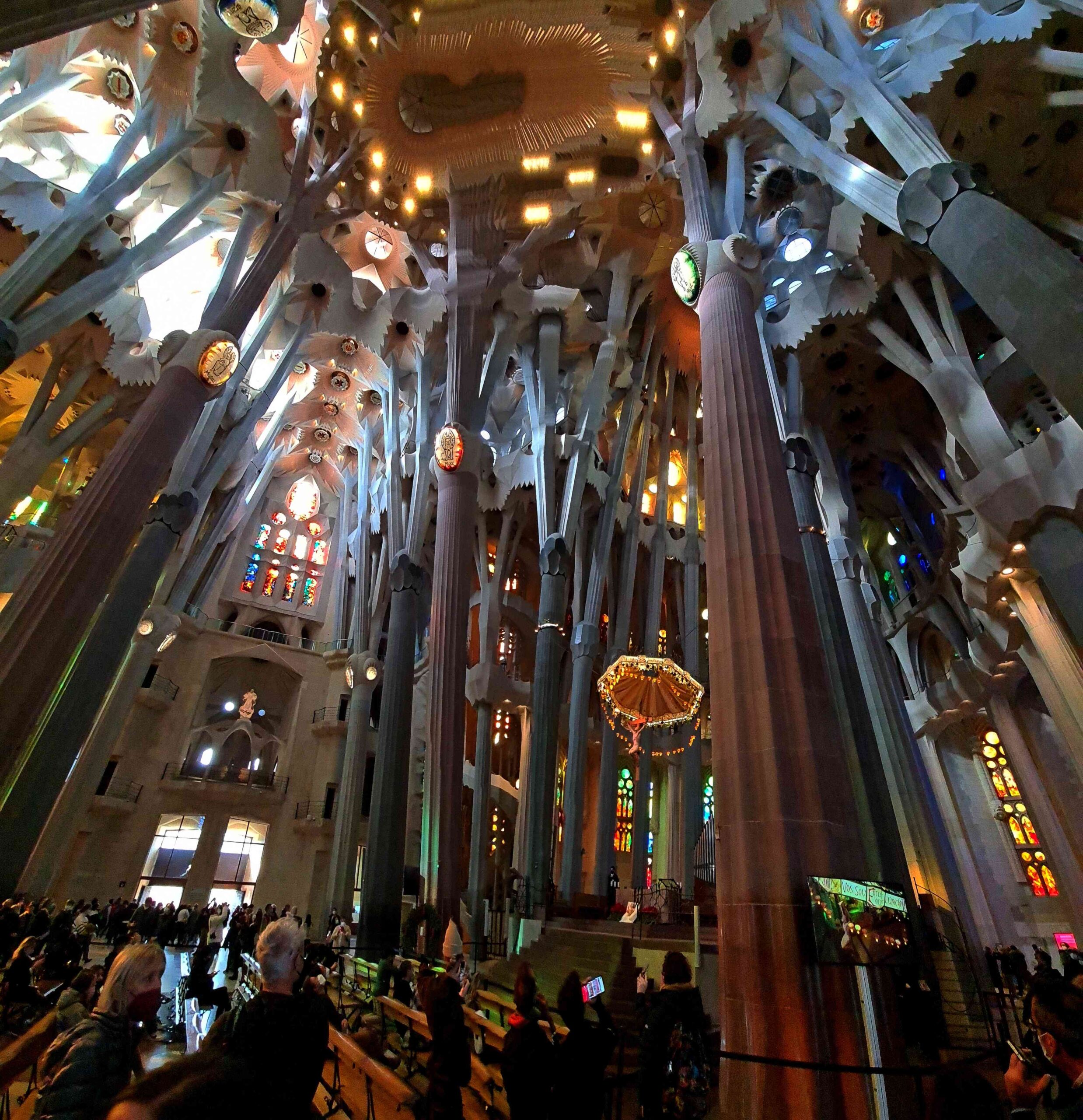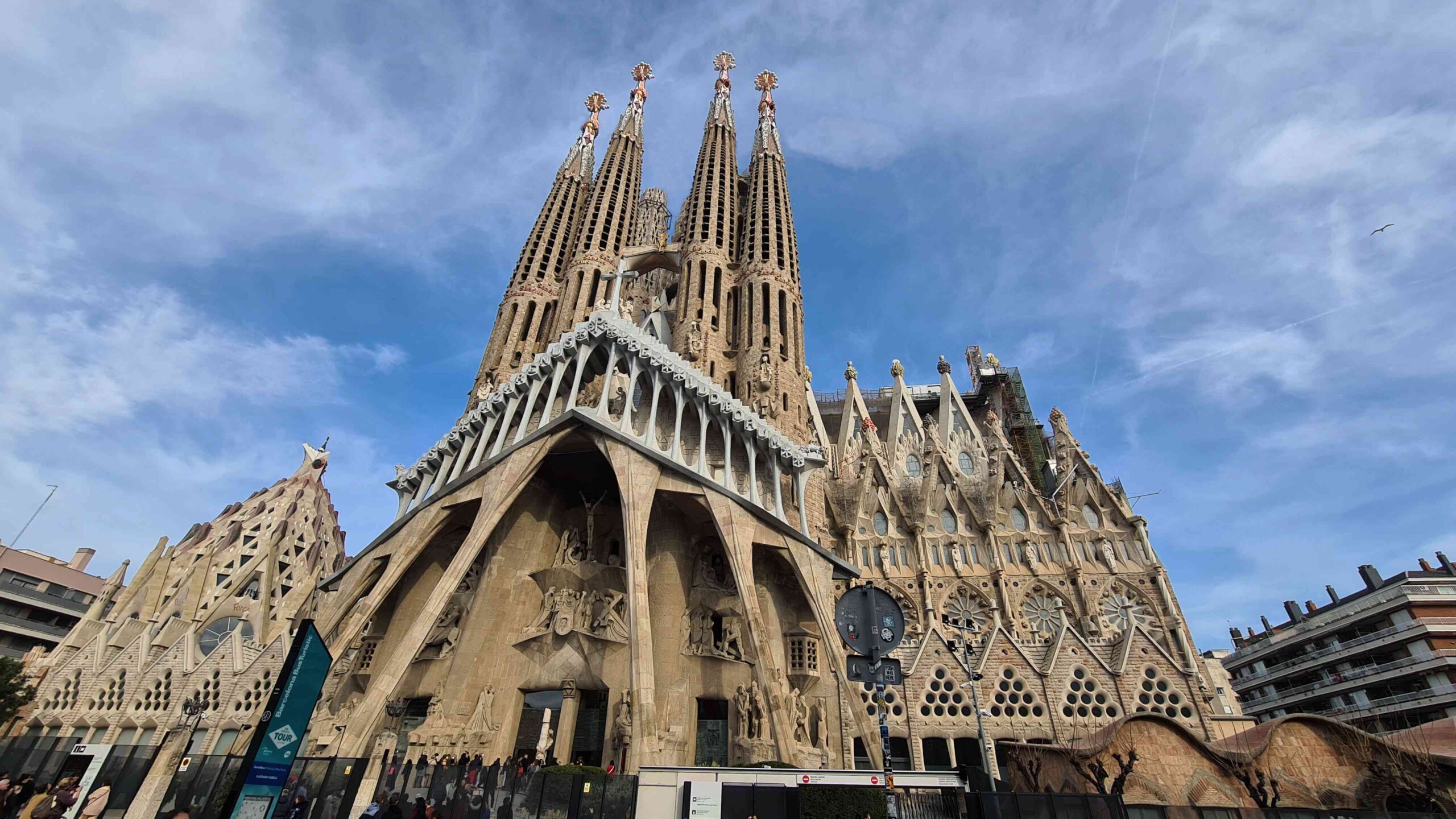Tourists who first come to Barcelona are covered with reverence and endless admiration for its symbol and main attraction – the magnificent Sagrada Familia.
It is a tourist mecca, 3 million tourists a year come to see it. 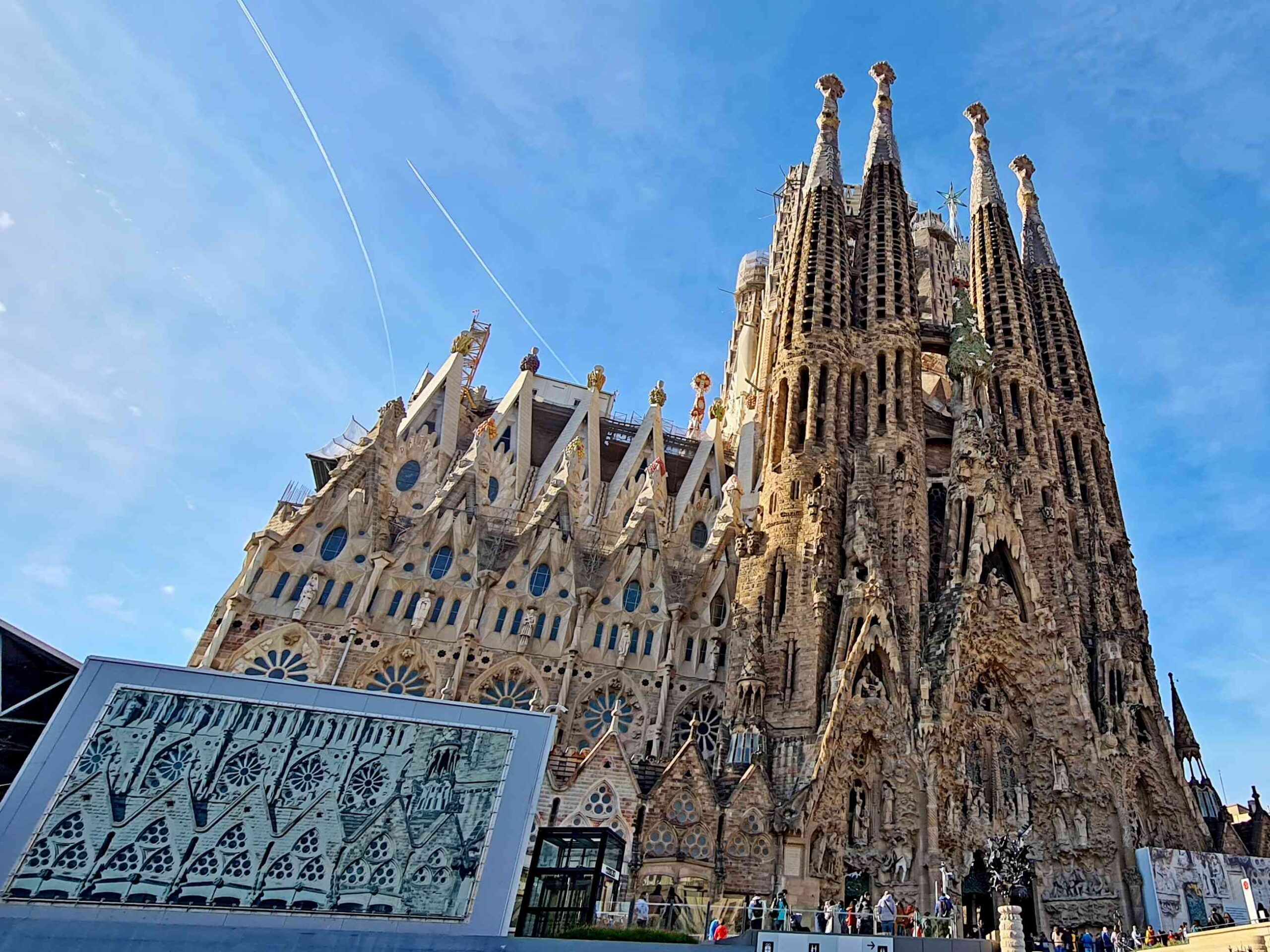 The Sagrada Familia is the world’s most famous long-term construction.
The Sagrada Familia is the world’s most famous long-term construction.
On March 19, 1882, when Barcelona was celebrating Saint Joseph’s Day, the bishop consecrated the place for the temple and laid the first stone. Construction has begun, and they promise to be ready only in 2026, when it will be a hundred years since the death of its architect Antonio Gaudi. 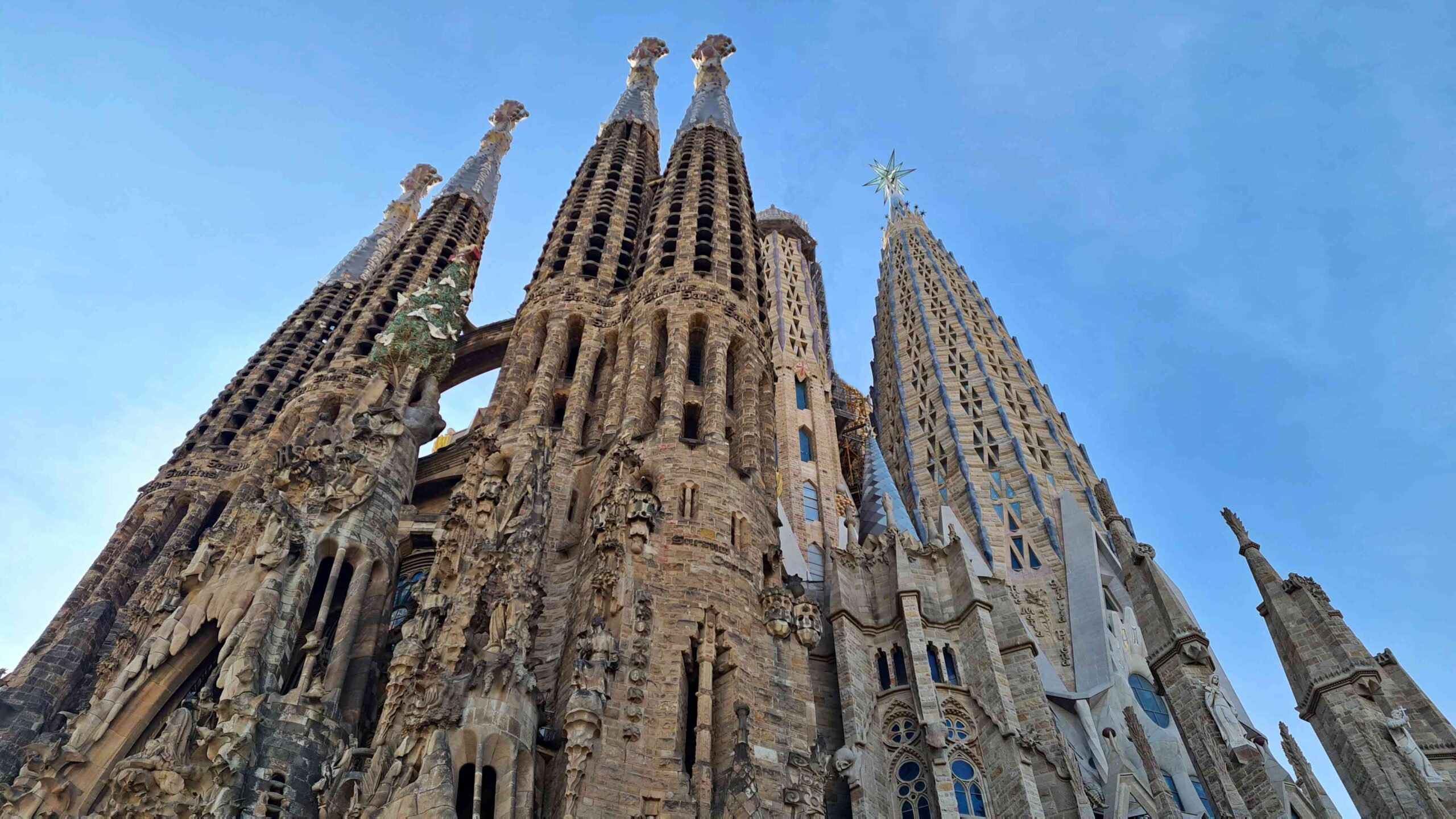 The construction of the Sagrada Familia began without the participation of Gaudi and, unfortunately, will end without him. The history of the small papal basilica goes back to 1881, when the God-fearing Spanish bookseller José Maria Bocabella Verdaguer, who returned from the Vatican, proposed the idea of building some analogue of the majestic temples of the Vatican in his homeland. For these purposes, he founded an association to raise funds for the construction of the cathedral. In addition, this idea was actively supported by the religious community of the Society of St. Joseph.
The construction of the Sagrada Familia began without the participation of Gaudi and, unfortunately, will end without him. The history of the small papal basilica goes back to 1881, when the God-fearing Spanish bookseller José Maria Bocabella Verdaguer, who returned from the Vatican, proposed the idea of building some analogue of the majestic temples of the Vatican in his homeland. For these purposes, he founded an association to raise funds for the construction of the cathedral. In addition, this idea was actively supported by the religious community of the Society of St. Joseph.  In 1882, the municipal authorities of Barcelona allocated a site for construction on the outskirts of the Eixample district. Since it was supposed to use the funds of the aforementioned community and donations from ordinary citizens for the construction of the temple, it was obviously supposed to lay a small budget for the construction. At one of the meetings of the Barcelona City Council, the famous architect and sculptor Francisco de Paula del Villar y Lozano offered to prepare a project for the future cathedral free of charge.
In 1882, the municipal authorities of Barcelona allocated a site for construction on the outskirts of the Eixample district. Since it was supposed to use the funds of the aforementioned community and donations from ordinary citizens for the construction of the temple, it was obviously supposed to lay a small budget for the construction. At one of the meetings of the Barcelona City Council, the famous architect and sculptor Francisco de Paula del Villar y Lozano offered to prepare a project for the future cathedral free of charge. 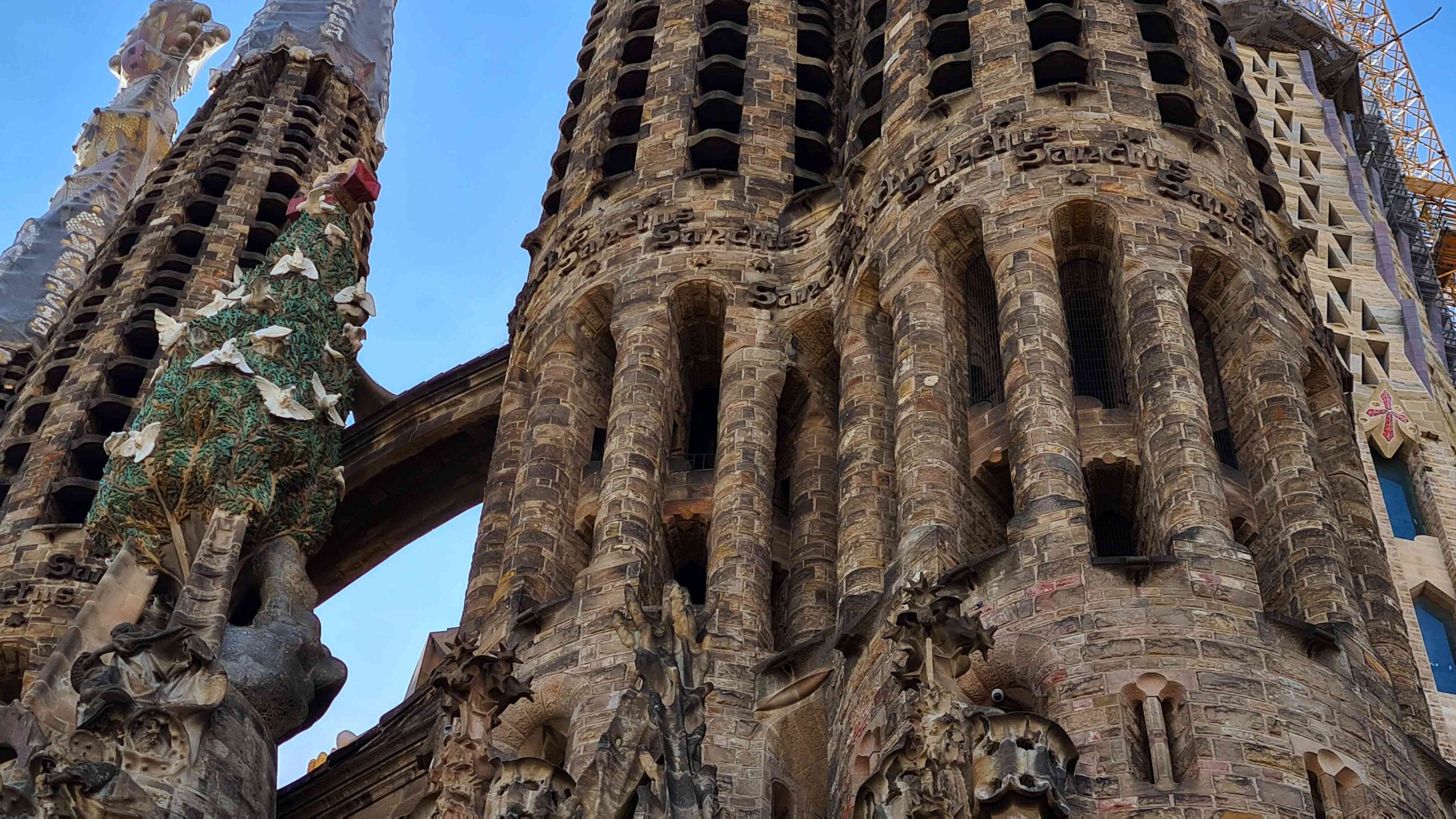 The project proposed by Villar combined both the observance of the traditions of Christian temple construction and the cost savings relevant to the situation. That is why a small, and, moreover, a neo-Gothic cathedral was supposed to be built in 10 years. However, things did not go quite as planned. Although already in the summer of 1882 about fifty people were involved in the construction, the construction manager Villar finally quarreled with the church council because of a very banal and prosaic circumstance – financing the work.
The project proposed by Villar combined both the observance of the traditions of Christian temple construction and the cost savings relevant to the situation. That is why a small, and, moreover, a neo-Gothic cathedral was supposed to be built in 10 years. However, things did not go quite as planned. Although already in the summer of 1882 about fifty people were involved in the construction, the construction manager Villar finally quarreled with the church council because of a very banal and prosaic circumstance – financing the work.  Thus, the council sought to cut costs by purchasing cheap building materials that Villar considered unacceptable to use. His salary also suffered. In the end, both the supreme architect himself and the church council began to look for another person for the position of head of the construction of the temple.
Thus, the council sought to cut costs by purchasing cheap building materials that Villar considered unacceptable to use. His salary also suffered. In the end, both the supreme architect himself and the church council began to look for another person for the position of head of the construction of the temple.  Suddenly, a talented young man, a former student of Villar himself, Antonio Gaudi, came to the attention of the church council and the architect. The latter experienced the greatest delight at the prospect of leading the construction of a grandiose Catholic cathedral in his homeland. He proposed to the church council an extremely bold project, which left only the foundation from the previous developments of his teacher. The church council unconditionally approved the candidacy of Gaudí. Because for them he turned out to be a “cheaper” worker than the eminent Villar.
Suddenly, a talented young man, a former student of Villar himself, Antonio Gaudi, came to the attention of the church council and the architect. The latter experienced the greatest delight at the prospect of leading the construction of a grandiose Catholic cathedral in his homeland. He proposed to the church council an extremely bold project, which left only the foundation from the previous developments of his teacher. The church council unconditionally approved the candidacy of Gaudí. Because for them he turned out to be a “cheaper” worker than the eminent Villar.  Starting in 1884, Gaudí was officially appointed as the head of the construction of the Sagrada Familia or the Temple of the Absolution of Sins, as the architect himself called it. For Antonio, the construction of the cathedral was not just a job – it was some kind of occupation for the soul of a deeply religious person. In such a vocation, he saw a purpose from above, and therefore, all these 44 years, he devoted himself entirely to work. According to the vision of Gaudi himself, the Sagrada Familia temple was supposed to become a kind of unity of the earthly and heavenly, a link between God and people.
Starting in 1884, Gaudí was officially appointed as the head of the construction of the Sagrada Familia or the Temple of the Absolution of Sins, as the architect himself called it. For Antonio, the construction of the cathedral was not just a job – it was some kind of occupation for the soul of a deeply religious person. In such a vocation, he saw a purpose from above, and therefore, all these 44 years, he devoted himself entirely to work. According to the vision of Gaudi himself, the Sagrada Familia temple was supposed to become a kind of unity of the earthly and heavenly, a link between God and people.  In this light, the construction was planned grandiose. No joke: 18 towers with ornate patterns and a huge central dome, towering 170 meters above the ground. The structure of the roof over the central hall was planned to be done in such a way that in its slot the sound of the bell would be carried like an organ, and the breath of the wind would resemble singing. By the way, even the bells for the cathedral were cast according to a special drawing of the architect – an unusual elongated shape.
In this light, the construction was planned grandiose. No joke: 18 towers with ornate patterns and a huge central dome, towering 170 meters above the ground. The structure of the roof over the central hall was planned to be done in such a way that in its slot the sound of the bell would be carried like an organ, and the breath of the wind would resemble singing. By the way, even the bells for the cathedral were cast according to a special drawing of the architect – an unusual elongated shape.  It is noteworthy that in the cathedral itself, Gaudi laid the magnificent idea of a different understanding of the Christian religion and faith. Over the long years of the medieval Inquisition, the Catholic Church denigrated itself to such an extent that it aroused not reverence among believers, but wild fear. The great architect believed that religion is light and good. Therefore, he designed the interior of the church to be bright, iridescent and blooming.
It is noteworthy that in the cathedral itself, Gaudi laid the magnificent idea of a different understanding of the Christian religion and faith. Over the long years of the medieval Inquisition, the Catholic Church denigrated itself to such an extent that it aroused not reverence among believers, but wild fear. The great architect believed that religion is light and good. Therefore, he designed the interior of the church to be bright, iridescent and blooming. 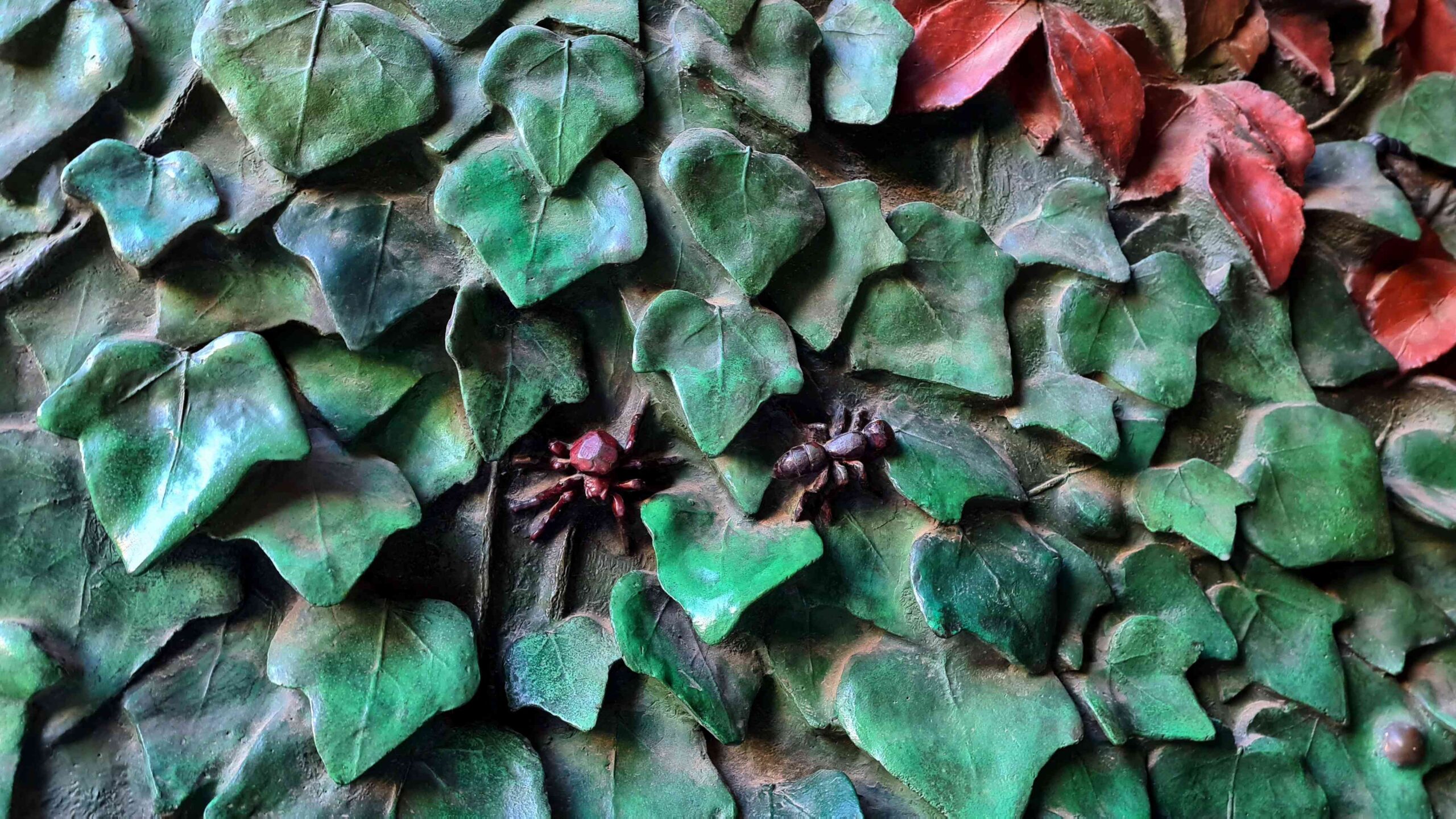 Antonio Gaudi not only preached Christian principles, but also actively implemented them during construction. So, he allowed workers to plant vegetable gardens in areas near the construction site, transferred elderly workers to less difficult work, and he himself huddled in a small closet right on the construction site and went to confession every evening.
Antonio Gaudi not only preached Christian principles, but also actively implemented them during construction. So, he allowed workers to plant vegetable gardens in areas near the construction site, transferred elderly workers to less difficult work, and he himself huddled in a small closet right on the construction site and went to confession every evening.  It is noteworthy that many high-ranking persons visited the great construction, in particular King Alfonso, Infanta Isabella, the papal nuncio in Spain, Albert Schweitzer, and the philosopher Miguel de Unamuno. With all of them, Gaudi kept himself dry, cold and, despite their displeasure, spoke exclusively in Catalan.
It is noteworthy that many high-ranking persons visited the great construction, in particular King Alfonso, Infanta Isabella, the papal nuncio in Spain, Albert Schweitzer, and the philosopher Miguel de Unamuno. With all of them, Gaudi kept himself dry, cold and, despite their displeasure, spoke exclusively in Catalan. 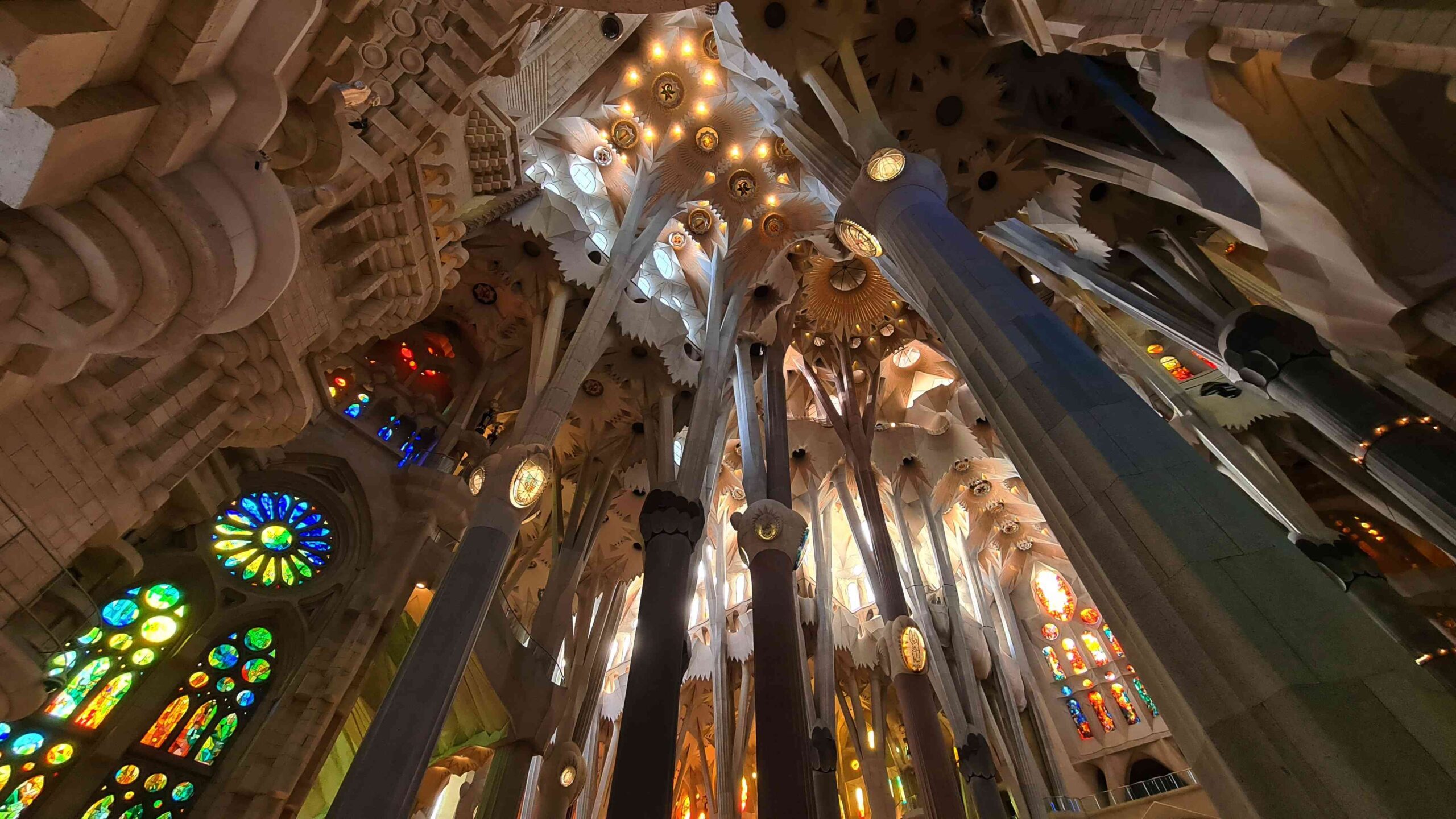 There are legends about the scrupulous attitude of Gaudi to every small detail of the interior and exterior of the temple. So, the stone statues decorating the facades of the building had to be raised and lowered many times from an incredible height for revision. At the same time, all biblical heroes were not made at random, but from nature – real people posed for him, whom he himself carefully selected from his environment.
There are legends about the scrupulous attitude of Gaudi to every small detail of the interior and exterior of the temple. So, the stone statues decorating the facades of the building had to be raised and lowered many times from an incredible height for revision. At the same time, all biblical heroes were not made at random, but from nature – real people posed for him, whom he himself carefully selected from his environment.  And although in 1939 work on the construction of the cathedral resumed under the leadership of Frances de Paula Quintana y Vidal, they were carried out rather at random. Each subsequent architect sought to complete Gaudi’s masterpiece, but was afraid to spoil something in the original plan. That is why, and also because of the lack of funds, the work was carried out extremely slowly. Nevertheless, over these long years, the builders managed to build the inner walls and partially complete the central facades.
And although in 1939 work on the construction of the cathedral resumed under the leadership of Frances de Paula Quintana y Vidal, they were carried out rather at random. Each subsequent architect sought to complete Gaudi’s masterpiece, but was afraid to spoil something in the original plan. That is why, and also because of the lack of funds, the work was carried out extremely slowly. Nevertheless, over these long years, the builders managed to build the inner walls and partially complete the central facades.  In 2010, the Pope consecrated the premises of the temple and named it the Minor Papal Basilica. From that moment on, church services began to be held in the Sagrada Familia Cathedral. However, the end of construction is still far away. Since the beginning of construction, the Sagrada Familia has not received an official building permit, Gaudi only once applied for a building permit and project approval, but after the refusal he did not try again, and for more than a hundred years the temple was actually built illegally.
In 2010, the Pope consecrated the premises of the temple and named it the Minor Papal Basilica. From that moment on, church services began to be held in the Sagrada Familia Cathedral. However, the end of construction is still far away. Since the beginning of construction, the Sagrada Familia has not received an official building permit, Gaudi only once applied for a building permit and project approval, but after the refusal he did not try again, and for more than a hundred years the temple was actually built illegally.  Now the Sagrada Familia has to pay a fine of 41 million euros for the lack of a building permit and for non-payment of tax, starting from the construction itself. For the temple this the amount is not so critical: 26 euros for the cheapest entrance a ticket, multiplied by three million visitors, it turns out 78 million in revenue per year.
Now the Sagrada Familia has to pay a fine of 41 million euros for the lack of a building permit and for non-payment of tax, starting from the construction itself. For the temple this the amount is not so critical: 26 euros for the cheapest entrance a ticket, multiplied by three million visitors, it turns out 78 million in revenue per year.  The authorities of Barcelona assure that in 2026 the temple will appear before the parishioners in finished form. Let’s hope that the soul of the great architect will contemplate from heaven that his great work was not in vain and nevertheless embodied the ideals of purity, goodness and light of the Christian faith.
The authorities of Barcelona assure that in 2026 the temple will appear before the parishioners in finished form. Let’s hope that the soul of the great architect will contemplate from heaven that his great work was not in vain and nevertheless embodied the ideals of purity, goodness and light of the Christian faith. 

